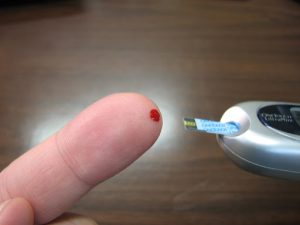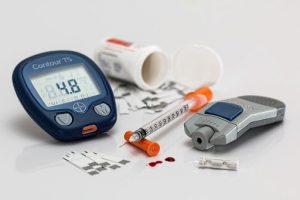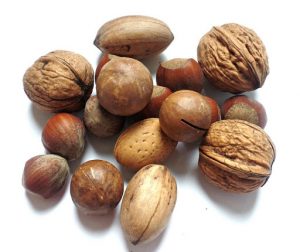How Many Carbs for Diabetics Daily?
Carbs and diabetes are often seen as two polar opposites. The popular opinion is that diabetics just cannot have carbs, or their condition will worsen. That raises an important question: how many carbs for diabetics daily?

There’s an acute need for education when it comes to consuming carbs, especially for those with diabetes. The most important thing to understand is that not all carbs are created equal. So does that mean you can eat those so-called good carbs all the time? Not quite.
This much is true that diabetics do need to watch their carbs. However, that in no way means they have to avoid them completely. After all, a well-balanced and healthy diet also includes carbs along with other nutrients.
Carbs and Diabetes
In order to understand why carbs have such a vital role in the life of a diabetic, it’s important to understand what they really do in our body.
Our body’s main source of energy is glucose or blood sugar. However, for someone with any kind of diabetes, processing blood sugar is not normal. Their pancreas doesn’t produce enough insulin or, in the case of type I diabetes, none at all, which is the hormone that helps the body cells absorb glucose from the bloodstream.
Now, blood sugar is directly influenced by what we eat. Carbs, in particular, have the most impact on blood sugar. Carbs are essentially sugars, as your body converts most carbs you eat into sugars that are then absorbed into your bloodstream for energy, while the extra is converted into fat.
There are different kinds of carbs, all of which affect blood sugar, except one.
Types of Carbs
There are essentially three types of carbs:
- Starch: Starch is the main type of carb found in most foods that we usually call carbs. These include whole grains like wheat, oats, and rice, as well as starchy vegetables like potatoes and even beans.
- Sugar: Sugars are also a kind of carb. The refined sugar we put in desserts and our coffee, as well as the natural fructose found in fruits, are all different types of sugars.
- Fiber: Fiber is mainly found in plant-based foods such as vegetables, fruits, beans, and whole grains. It’s a complex carb, which the body doesn’t break down so easily. As a result, it doesn’t raise blood sugar as starch (the most common carb) does. Although a carb, it’s marked separately in nutrition charts on foods.
What Are The Effects of Carbs on Blood Sugar?
When you eat carbs (sugars and starch), your body breaks them down to produce simple sugars. These sugars are absorbed into the bloodstream and provide energy.

However, the time it takes to happen depends on a number of factors, but mainly on the glycemic index. Glycemic index or GI refers to the ability of food or, particularly, carbs to raise blood sugar. Those foods with a low index don’t raise blood sugars dramatically, whereas those with a higher index do.
In diabetic people, carbs except fiber can result in a sudden increase in blood sugar. This can throw off the balance and may even result in a stroke or heart attack, in severe cases. It also requires a higher dose of insulin or diabetes medication to get the levels back to normal.
Fiber is very different from starches and sugars. Some fibers are soluble while other are insoluble. Neither type usually increase blood sugar. In fact, there’s evidence that fiber may even help control blood sugar.
So when we talk about carbs and diabetes, it’s important to make the distinction between which carbs are actually bad and which carbs are more beneficial.
Carb Restriction for Diabetics
Since carbs can potentially increase blood sugar in diabetics, many diabetics follow carb restrictions in their diets. Either they generally consume fewer carbs regardless of what their diet is or follow special low-carb diets such as keto diet or diabetes diets. Doctors also advise patients with diabetes to watch their carbs.
However, restricting carbs isn’t that simple or easy, for that matter. Look around you, and you’ll see there are just so many carbs in our daily diet. The traditional Western diet, in particular, is highly rich in carbs and that too of mostly starches and sugars, not so much fiber.
The question of limiting carbs isn’t just for diabetics anymore; it’s become a question for overall health too. Carbs in processed foods are considered unhealthy as they raise blood sugar and turn into fat. This is why even non-diabetics are watching their carbs all the more often now in an effort to stay healthy and in shape.
But that still leaves a lot of confusion as to how much to restrict, what to restrict, and when to restrict.
There are numerous studies, both big and small, that have confirmed that carb restriction does benefit patients with diabetes. A 44-month observational study of 31 obese individuals with type II diabetes showed that glycemic control resulted in weight loss and better sugar control. The group that achieved these promising results were following a 20 percent carb diet, i.e., 20 percent of their total calories came from digestive carbs. This study was published in Nutrition and Metabolism.
Another long-term study, published in Diabetology and Metabolic Syndrome, focusing on patients with type I diabetes, found very promising results on restricting carb intake.
How Many Carbs for Diabetics Daily?
Counting carbs isn’t so easy even when you don’t have diabetes, but with diabetes, it gets even more tedious.

First of all, there are many factors at play here. The number of carbs that you can healthily consume as a diabetic may be influenced by your age, sex, weight, level of physical activity, level or type of diabetes, whether you’re on just medication or insulin as well, and even your overall diet.
Secondly, there are many opinions as to what’s the magic number. The real answer is that with so many factors, there’s no magic number. What may be good for one diabetic person may not work for another.
Normally, dietary guidelines recommend keeping daily carbs at 45 to 60 percent of your intake. However, some experts argue that’s still too much.
The Center for Disease Control and Prevention (CDC) recommends keeping calories from carbs at half of the overall calories.
The American Diabetes Association (ADA) doesn’t specify any number or percentage, rather draws guidelines for people with diabetes to properly manage blood sugar levels.
The general consensus is that reducing carbs generally improves blood sugar control, especially reducing process carbs rich in sugars. Some people keep their carbs as low as 20 percent and see their blood sugar levels balanced after meals.
However, the results may differ from person to person when reducing carbs by so much. It’s also important to note that carbs are the preferred fuel for our body. So we do need carbs to have ample energy to get through the day.
Reducing carbs way too much can be unhealthy, especially for a diabetic person. It may drop their blood sugar to a dangerously low level.
How Do I Choose the Right Carbs?
Carb restriction is one thing, and being smart about your carb choices is another. Rather than getting down to the macros with everything you eat or drink, it’s much better to make healthy choices.

Since carbs can be both good and bad, why not simply stick to good carbs? This is where a plant-based diet comes in. A whole-food plant-based diet focuses largely on whole foods, good carbs, and most importantly, fiber.
You want to include more fiber into your diet, as it’s highly beneficial for diabetics. When you go plant-based, you naturally avoid processed foods and get your carbs the natural way. This has a very positive impact, even if you’re not actively counting carbs and reducing intake.
8 Tips to Counting Carbs for Diabetics
If you’re a diabetic, keeping a check on your carbs can be immensely helpful. It goes hand in hand with making good food choices such as going for plant-based whole foods mostly. Here are some tips for counting your carbs:
- Recognize which foods are generally rich in carbs: bread, sweets, fruits, some vegetables, beans, some whole grains.
- Keep carbs in your meal equal to or less than 60 grams.
- Watch the carbs you consume in snacks, as many snacks are rich in sugars/carbs. (Balance them with even fewer carbs in your main meals)
- Look at carbs per serving on food labels, and for foods without labels, simply search online.
- Count carbs for food and drinks both, as the drinks also count towards your overall daily carb intake.
- Avoid processed foods as much as you can and consume whole foods and try to prepare meals at home.
- If you’re very particular about this, you can even keep a journal documenting your carb intake as well as your blood sugar levels several times during the day (especially before and after meals).
- Take your time to find out how much carbs work for your body in order to maintain blood sugar levels.
What Foods Should You Avoid or Limit?
Everyone, whether healthy or not, should ideally watch their carbs, especially watch out for bad carbs. However, it’s all the more relevant for diabetics to watch what they eat and avoid certain carbs-rich foods that will spike their blood sugar levels.
You should limit or eliminate the following:
- White bread
- Processed Foods
- White pasta
- White rice
- Refined sugar
- Sugary drinks
- Processed cereals with added sugars
- Sugary snacks
What Foods Are Good for Diabetics?
Instead of counting calories and nutrients all the time, simply make it a habit to eat foods that help with diabetes. You’ll get rid of all the guesswork and enjoy foods that help treat and even reverse your diabetes.
Here are the prime examples of food you should increase in your diet:
Broccoli
Broccoli is a superfood that contains very little carbs. A cup of broccoli florets will give you just about 6 grams of digestible carbs.

Research from the International Journal of Food Sciences and Nutrition has shown that broccoli lower insulin levels and also prevent cellular damage in patients with type II diabetes.
Chia seeds and Flaxseeds
You should add both chia seeds and flaxseeds to your diet, as both these seeds have been found to help to control and treat diabetes. They mostly contain fiber and very little digestible carbs.
Also, they help with reducing weight and maintaining a healthy body mass index. Diabetes is highly common in obese individuals, so you can control your diabetes and lose weight at the same time.
Strawberries
You’re probably thinking, aren’t strawberries sweet, so they must be high in sugars? Well, they contain natural sugars, which are not bad for diabetics. However, more importantly, these beautiful berries contain anthocyanins, which have been found to reduce insulin levels.
Beans
Beans are another healthy option for consuming carbs. They have a very low glycemic index, which makes them ideal for diabetics. Plus, beans are also high in fiber.
Nuts
The carbs vary in nuts, but overall the total carbs are mostly made of fiber. So these easily qualify as good carbs.

Cashews have the highest number of carbs, whereas Brazil nuts have the lowest.
Research indicates that regularly eating nuts can not only improve insulin production in diabetics but also help prevent cardiovascular disease.
However, keep the portions small as most nuts are very nutrient-dense and high in calories.
Wrap Up
So how many carbs for diabetics daily? It depends on many things, but it’s easier to keep a check on carbs as a diabetic by simply making healthy choices and avoiding bad carbs. Plant-based diets can help you get just enough carbs to have a healthy, well-balanced nutrient intake while also helping improve your insulin response.
But if you’re a numbers person, make sure to keep your overall intake of carbs lower than 60 percent of the total calories. It should ideally be between 45 to 60 grams per meal.











